Top tips and recommendations for hiking the GR20.
[Updated April 2020]
This post contains affiliate links for which Expedition Wildlife may receive a commission (where applicable) at no additional cost to you.
As prepared as I felt I was at the beginning of the GR20 north trek, I didn’t fully comprehend what lay ahead in the coming days on the trail. This post will cover recommendations and tips, gear considerations, and more.
GR20 Statistics
Distance Total: 112 miles (180 kilometers).
Total Elevation Gain: 41,900 ft (12,775 m).
Total Elevation Loss: 41,800 ft (12,735 m).
Duration: 16 days.
Physical Difficulty Level: High, uphill and downhill training highly recommended.
Mental Difficulty Level: High, comfort with heights and ledge exposure required.
Gear Necessity: Light or ultralight gear highly recommended (see list below). Food available along the trail, but recommend purchasing as you go.
Recommended Guides: Cicerone’s Trekking the GR20 Corsica: The High Level Route by Paddy Dillion is an essential guide. *This is our recommended guide to take with you on the trail!!*. Or for French speakers, TopoGuides’ A Travers la Montagne Corse (in French).
Table of Contents |
|---|
| 1. About the GR20 |
| 2. Hiking the GR20: Overview |
| 3. When to Go |
| 4. Cost of Hiking the GR20 |
| 5. Getting to the Trailhead |
| 6. Accommodation on the GR20 |
| 7. Food on the GR20 |
| 8. Water on the GR20 |
| 9. Weather on the GR20 |
| 10. Miscellaneous Tips |
| 11. Gear Recommendations |
| 12. Getting Around Corsica Afterwards |
Click the Google Maps image to see all the stages for this trek.
GR20 North Section – Calenzana to Vizzavona
Distance Total: 62 miles (100 kilometers).
Total Elevation Gain: 26,500 ft (8,080 m).
Total Elevation Loss: 24,300 ft (7,400 m).
Duration: 9 days.
GR20 South Section – Vizzavona to Conca
Distance Total: 50 miles (80 kilometers).
Total Elevation Gain: 15,400 ft (4,695 m).
Total Elevation Loss: 17,500 ft (5,335 m).
Duration: 7 days.
*UPDATE AS OF 5/2019: The Refuge d’Ortu di u Piobbu (the first hut on the North-South hike), unfortunately, succumbed to flames in May 2019. For the most updated information on this refuge, contact either the Tourist Information Centre in Calvi or ask the Facebook GR20 forum. We will update here on our website when we find more information about reconstruction/opening times, camping permits, food availability, etc.
**UPDATE AS OF 4/2020: While the refuge d’Ortu di u Piobbu is being repaired and rebuilt, there is still the option of camping on site. Someone is available to take payment for pitching a tent, as well as to maintain the toilets and prepare food for visitors. Easy foods, such as cheese and crackers, can also be purchased, and an overhanging tent for coverage while eating can be used.
About the GR20
The GR20 trek is on the island of Corsica, just off the southern coast of France. It has been dubbed the “hardest trek in Europe” by hiking and trekking guides all over the world.
This designation is apt, as the consistent significant elevation gain and loss, coupled with the need to use your hands during dozens of instances throughout the route, make for a challenging trek overall.
Don’t let that scare you off from hiking the GR20, however. As long as you are in good hiking shape and have your wits about you with heights and ledge exposure, it’s likely you’ll be just fine.
The biggest danger on the trail overall is bad weather in the high mountains. Be sure to stay put if the weather is foul from the get-go as dry rock is near-essential for some sections in the northern route.
Always listen to your gut and don’t attempt to continue with a hike that is beyond your comfort level.
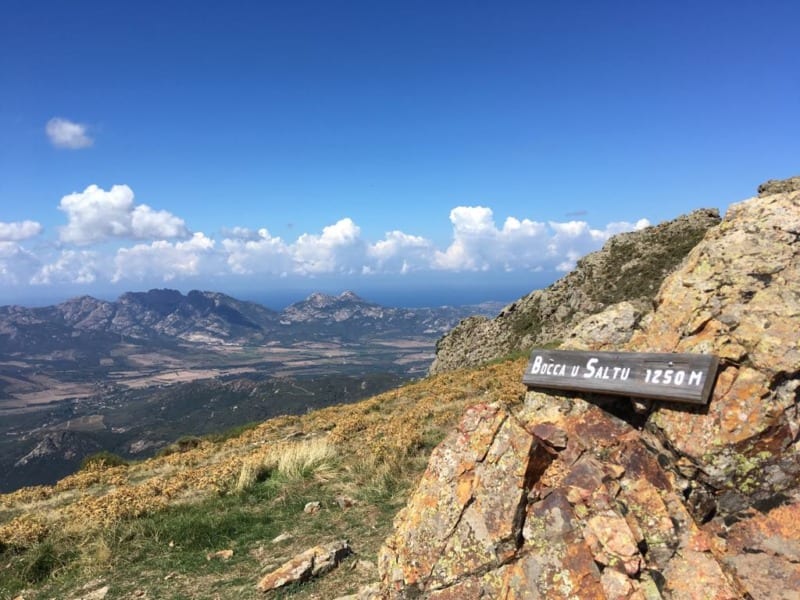
Despite its difficulty level, hikers come from all over the world to conquer Corsica’s stunning and unique mountains. Photo by Christa Rolls
Hiking the GR20: An Overview
The GR20 is classified as a long-distance trek, spanning nearly the entire north-south distance of the Corsican island, a total of 112 miles (180 kilometers). It has a serious mountain-to-valley elevation variation of about 32,000 feet (10,000 meters) over a 16-day hiking period.
The northern starting point is the town of Calenzana and the southern terminus is the town of Conca.
If you’re hiking north, top off your hike with a jump into the clear blue ocean at Calvi, just north of Calenzana. If you’re hiking south, jump in the ever bluer waters of Porto Vecchio, just south of Conca. It’s a tradition.
Keep to the red-and-white blazes
The trail itself is well-marked with red-and-white blazes throughout the entirety of the trail. Keep to these marked areas as they will provide the easiest and safest direction of travel.
Choose whether to travel north or south
The most common direction of travel is from north to south, as most hikers prefer to get the harder days out of the way first.
If traveling from the south, the last few days of the trek will be the most arduous.
The trail is broken into two sections
The GR20 has a north section and a south section. Vizzavona, a small town, marks the junction between the two sections.
The north is the most difficult section, as the most technical and grueling days climbing up and down rugged and rocky mountains are largely covered during the first four days heading south.
Get the right guide
The aforementioned guides and online resources have nearly everything you need to know about each stage of the hike, day by day.
The Cicerone guide has incredibly detailed information (nearly turn-by-turn) and includes nearly everything you’ll ever need to know about the hike, and the Corsica for Hikers forum (corsica.forhikers.com) is a great place to see a general overview of what to see and expect along the trail.
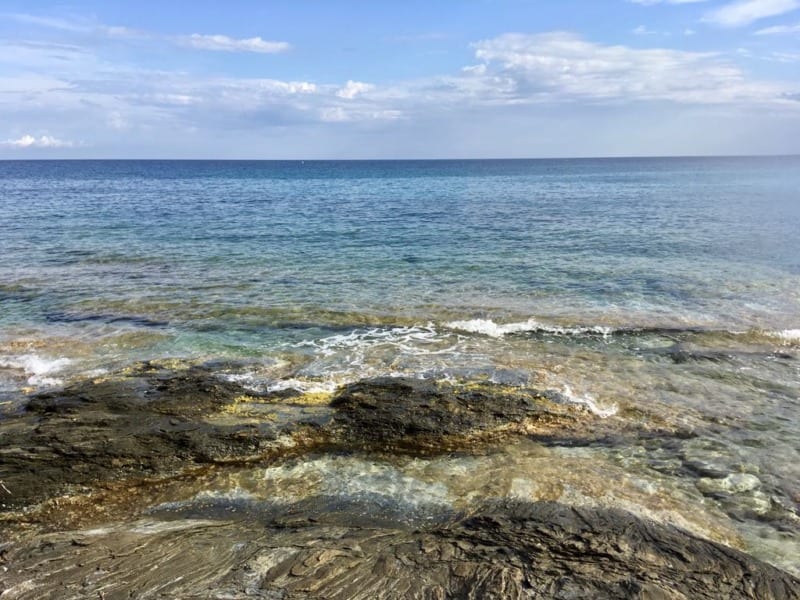
Doesn’t this look enticing? The ocean view from Pietranera, Corsica. Photo by Christa Rolls
When to go/Best Season to Hike the GR20
Early June to Mid-to-Late October is the recommended time to tackle the GR20. Most refuges and re-stock locations will stay open through September.
Wait until the refuges are open and the snow has largely melted away from the main parts of the trail. This is, of course, unless you have mountaineering experience and plan to hike the trail with the appropriate gear and experience. You may need to bring crampons if you go earlier in the summer season.
Check the trail conditions with the refuges separately, or GR20 Facebook page. I must say, the Facebook page is especially helpful for updated trail conditions.
I went in September and the weather was perfect. All the refuges and various re-stock locations were open and everything wasn’t horrendously busy. Yet, plenty of people were on the trails and at the refuges. There also wasn’t any snow on the trail, and it wasn’t as busy as the trails usually would be in July and August (vacation months for most of Europe).
I recommend you avoid July and August, if possible, to avoid the crowds.
Once you hit October, check transportation options and contact refuges ahead of time to determine if they’re open. Starting in October, you’re officially outside of high season.
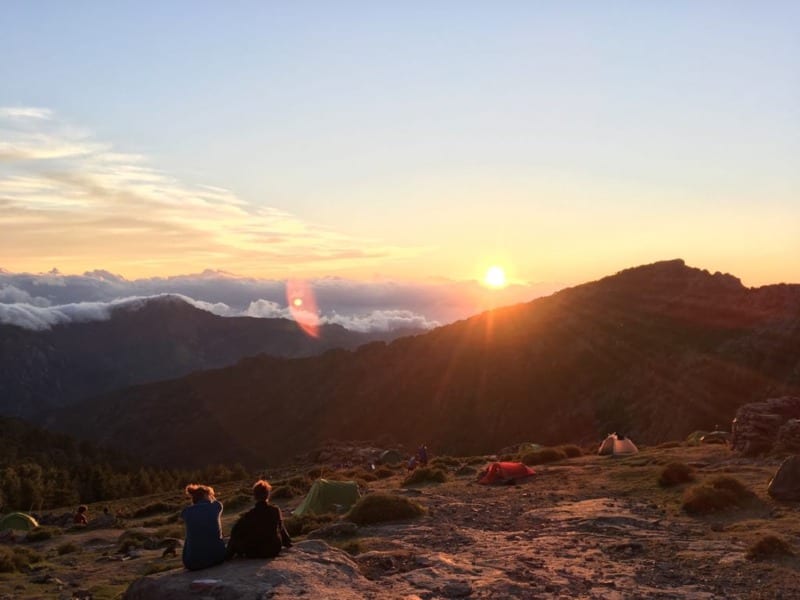
A field of tents set up by GR 20 hikers at Refuge D’Ortu Di U Piobbu. Just look at that view! Photo by Christa Rolls
Check out our other long-distance trekking guide of the Tour du Mont Blanc!
Cost of Hiking the GR20 North
For the GR20 north portion of my visit to Corsica, I spent about €200 on transport and trail necessities. This accounted for:
Transportation
- Bus transportation from the Bastia airport to the downtown Bastia train station (€9)
- Train from downtown Bastia to Calvi (train station takes credit cards; €16)
- Bus transportation from Calvi to the Gite d’Etape Communal in Calenzana (bus info center takes credit cards; €9)
Accommodation
- Tent space each night at refuges (using my personal tent; €7-9)
Meals
- Snacks for the evening (read: end of day beer; prices vary, usually €2-3)
- Periodic lunches for the next day (Barquette or Tabbouleh; around €7)
- Treating myself to dinner two nights (€20 at the refuges and hotels; hotels such as that as Ascu Stagnu will take credit card)
With the purchase of the tent space or refuge bed, use of the showers (which were always cold by the time I arrived) and communal gas stove is free of charge.
Prices for tent spaces and food at the southern refuges are comparable. The cost to rent a tent is typically around €10 and to rent a bed is around €14.
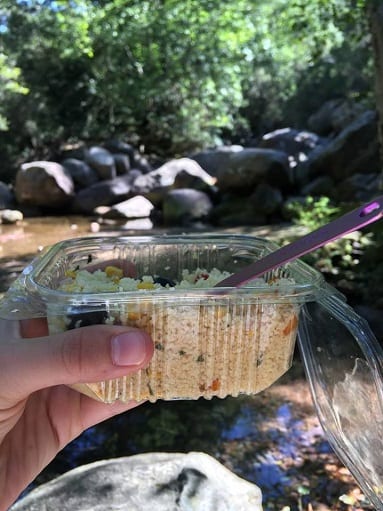
Barquette or Tabbouleh purchased from Refuge D’Ortu Di U Piobbu. Photo by Christa Rolls
Getting to the GR20 trailhead
No matter where you are starting your hike, give yourself one full day to travel to the trailhead. It just takes time and a solid handle on the train or bus schedules to get to where you need to be.
Check out the unofficial Corsica bus (corsicabus.org) page for bus and train timetables. Also, don’t hesitate to contact the Tourist Information Centers for more information (all details listed at the end of this post).
Keep in mind that bus and train timelines will change outside of the high season. This is typically mid-to-late September.
Possible points of entry
If traveling north to south, you’ll want to start at Calvi. This is, of course, unless you want to only do half the route on the easy side traveling North-South. In this case, you would start at Vizzavona and end at Conca.
If traveling south to north, you’ll want to start at either Conca or Vizzavona. Head to Conca to do the full South-North trail or the easier half of the southern trail. Start at Vizzavona if you plan on doing the harder half-section of the South-North trek.
Getting there from Calvi
If you are traveling the traditional North to South route, the best option would be to fly or ferry into Calvi directly. Calvi is the closest major town near the north trailhead.
From there, you can either hail a taxi directly to Calenzana or explore around Calvi and take the Beaux Voyages once-a-day bus to Calenzana. Note that Beaux Voyages has limited operations times outside of July and August and may only run on weekdays.
It might cross your mind, to walk to the trailhead at Calenzana from Calvi. This will take an hour or two and you’ll be on a narrow road with no sidewalks. Exercise extreme caution when walking these roads and don’t assume you have the right of way.
Getting there from Bastia
Most flights go out of Bastia, but keep in mind that you’ll spend most of the day just trying to get to Calenzana or Vizzavona.
A handful of times throughout the day, a bus will be parked just outside the baggage claim doors taking people to downtown Bastia’s train station. Tickets for the train to Calvi or Vizzavona can be bought directly at the train station.
Consider getting a flight that arrives earlier in the morning to give you time to get to the train station to catch the train, then travel the three-hour journey to Calvi.
More Train Logistics
Trains go between Calvi and Bastia, and Bastia down through Vizzavona and to Ajaccio, the birthplace of Napoleon Bonaparte.
You may also start off from Ajaccio or Porto Vecchio to get to the trailhead. To get to Conca, you’ll need to catch a bus from Vizzavona or Porto Vecchio via Eurocorse Voyages. Again, I recommend flying into a northern airport if starting on the north end.
The train does not go to the southern terminus of Conca, or Porto Vecchio, if you are considering a south to north route. Contact the Gite de la Tonnelle ahead of time to arrange for a shuttle transfer to Conca from Sainte Lucie.
Accommodation on the GR20
You have a handful of different options for accommodation along the trail.
The GR20 forums state there being issues with bed bugs in some of the tents and bed spaces. This is a good reason to bring your own tent!
Reserve a bed/rent a tent at a refuge
The first option is to get/reserve a bed at the refuges in one of their communal rooms. Or, you can rent/reserve a tent hired by the refuges.
Each refuge has its own setup, but keep in mind that refuge tents are often very limited.
If you are planning to trek the GR20 during the high season, especially July and August, contact the refuges ahead of time to reserve yourself a bed or tent space.
Bring your own tent
The next option is to bring your own tent and pay for a space to sleep on the refuge grounds. I didn’t have any issues getting a space for my tent. Just know that refuges tend to get busier as you move south. The easier sections of the trail have more day hikers!
Rent a hotel room
Periodically, there are hotels where you can get an actual room, if you want a hot shower and good bed. Don’t count on this very often, though!
NO wild camping
Wild camping is technically illegal along the GR20. In some places, you’ll see spots that have been designated specifically for camping out, but these are few and far between.
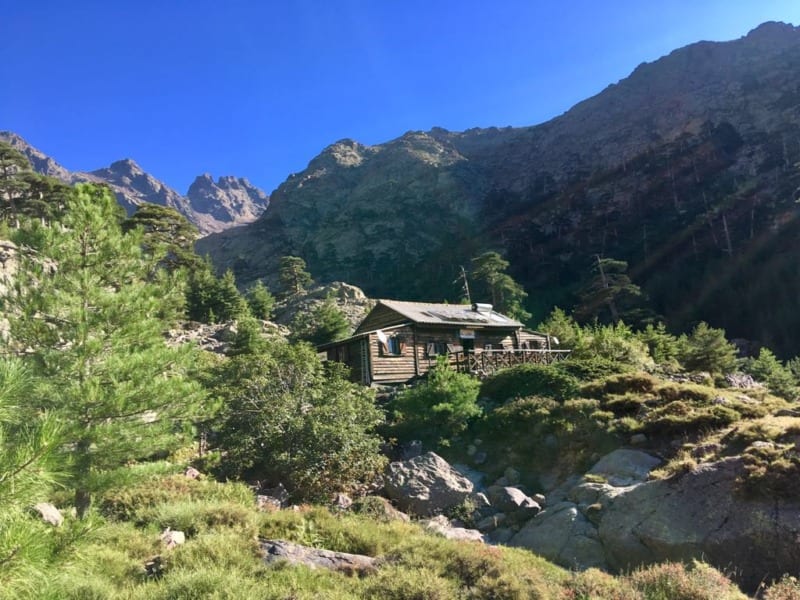
The Auberge U Vallone sits among pines along the rocky slopes of the Ravin de Stranciacone. Photo by Christa Rolls
Food on the GR20
I packed all my own food for the entire northern section trip. However, I did end up getting lunch snacks at most of the refuges to carry for the following day. This, coupled with my Jetboil system, was heavier than I would have liked.
I would recommend having some snacks in your pack for the day and purchasing most meals at the refuges. This will save you a ton on pack weight, as long as you can manage the refuge meals financially.
Otherwise, skip bringing your stove system, as the refuges will offer a gas stove and utensils for cooking.
Food at the refuges
All refuges will offer some variation of breakfast and dinner, and some a selection of snacks and lunch barquettes.
Fewer still will have miniature stores with fresh cheeses or freeze-dried meals for purchase. Note that some refuge meals are definitely better than others, both in my experience and based on what my fellow hikers told me.
The dinner at Refuge Tighiettu was fabulous (local charcuterie, delicious pasta with sundried tomatoes and olives, and an apple puree for dessert). Friends on the trail raved about the omelets and dinner at Auberge U Vallone.
Breakfast at most refuges will cost you about €9 (usually bread and cheeses) and €20 for dinners (soup or charcuterie, pasta of some kind, and a dessert). The prices are pretty high, but carrying all of the food can be grueling, too.
It’s up to you how you want your hiking experience to be.
The food I packed and carried
- Breakfast: apple cinnamon oatmeal and Starbucks VIA coffee.
- Snacks/lunch: beef jerky, chocolate, nut, and fruit protein bars, LARA coconut bliss bars, fruit leather, cashews, and tabbouleh purchased from the refuges (sometimes it was hard-boiled eggs or crackers and cheese).
- Dinner: Couscous and salmon packets, freeze-dried chicken gumbo, freeze-dried veggie burrito, and freeze-dried honey lime chicken and rice for 8 nights total (doubled up on each).
Water on the GR20
For the majority of the northern section you won’t have to worry about filtering water. Refuge managers will always tell you which water spout is potable or not.
Most people I met on the trail didn’t filter from the tap and experienced no issues.
The southern half of the trail, however, has a different bacteria in the water. It is recommended to only use potable water stations or bring a water filter with you.
I drink a ton of water (about 3L+ in a day during a long hike) so I use the Katydyn 6L Gravity Camp water filtration system. I also kept the filter at camp with me.
If you drink like a camel, grab the Sawyer Mini water filtration system. It’s super compact and lightweight and is perfect if you don’t need more than a couple of liters.
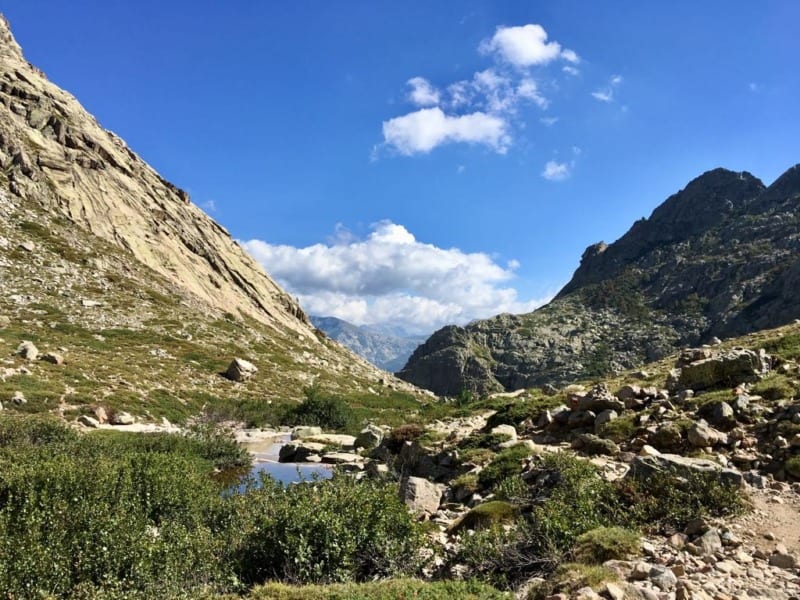
Nearing the Ford along Le Golo Fleuve – just look at those pools of glorious water! Photo by Christa Rolls
Weather on the GR20
Weather in the mountains can be incredibly unpredictable.
On my first night in Calenzana, the weather forecast anticipated only sun for two weeks. Yet, a raging thunderstorm came from over the mountains and poured down on us. Thankfully that was the only time during my trip!
Be sure to layer up as well. The elevation gain and loss will take you to colder, windier places, then back to warmer, less windy locales. Even in summertime, the evenings can be quite cool in the mountains.
Always check the weather forecast with the refuge the night before and morning of heading out. Don’t go up to the higher mountain passes if the weather looks foul!
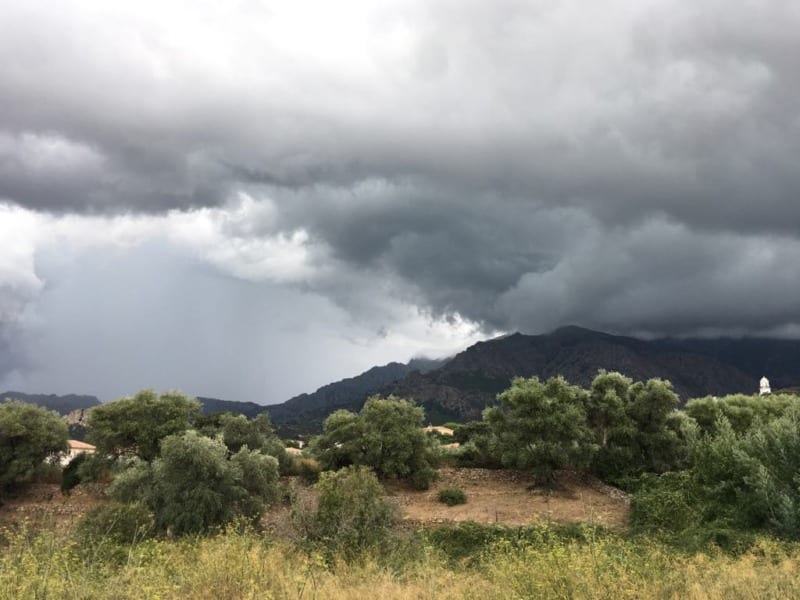
Thunderstorm over Calenzana, despite the sunny weather forecast. Photo by Christa Rolls
Miscellaneous tips for hiking the GR20
Always leave your itinerary with someone you trust off the trail
The difficulty level of the GR20 should not be taken for granted or lightly. Anything can happen in a mountainous and remote region such as the Corsican mountains.
Leaving your itinerary and travel plan, and setting up call times to check in with someone, ensures you can be found somewhat quickly if something bad were to happen to you on the trail.
Be mindful and careful
Injuries occur every year on the GR 20, usually because people simply get tired or don’t watch where they are putting their feet. DON’T get complacent on the trail!
Always be mindful of where you place your feet. Only wait until you’re ready to continue when you reach a spot that prohibits you from turning around.
Learn some French
It will benefit you to learn a bit of French before you head out on your trip.
Not all of the refuge managers will be able to speak English or languages other than French (which is technically different than Corsican but is close enough where French is well understood).
In addition, many of the people you’ll be hiking and dining with at night will be French speakers.
At the very least, learn to say the basic phrases, such as: hello (bonjour or bonsoir), please (s’il vous plait), and thank you (merci).
Get good hiking poles
Use poles when you need to, and know when to put them away. By the latter I mean, when you need to use two hands, don’t fumble around with trying to cling for dear life to your poles simultaneously. These are my favorite hiking poles.
- Nearly all of day 3 I didn’t take my poles out because I felt they would hinder me too much on the ascent and the descent.
- On day 4, I only took my poles out once I got to the long scree field about halfway up the ascent. Otherwise I needed my hands free for most of the first part of the ascent. The descent on the other hand is quite nice and there are only a handful of times that you have to climb down small rock walls.
- Other than these two days, I was able to navigate the rocks with my poles collapsed in one hand.
Get good hiking shoes
Make sure your shoes are durable enough to handle essentially rock climbing on rough rock and that the tread isn’t falling apart. I swear by my Vasque hiking boots!!
This goes along with making sure you have broken your shoes in and have good socks that don’t cause blisters. I recommend SmartWool and Darn Tough or using a liner sock to prevent rubbing. Seriously, I LOVE Darn Tough socks…
“Trust your shoes and your feet”
This was the best advice I received on the trail. That seems simple enough, but when you’re literally crawling up scree or climbing up rocks, sureness in your footsteps is what helps to keep you going.
Explore other parts of Corsica
Take time before or after the trail to explore other parts of the island and experience Corsican culture.
I spent a good amount of time in Bastia after my trek and I had a lot of fun. There are options to explore the historic city and eat amazing food, kayak, go boating, take a bus to Erbalunga or Saint Florent and simply explore, scuba dive, horseback ride through the hills of Cap Corse, and more.
Check out some of the tours offered around Corsica!
- For even more adventure after your trek, go on 4×4 to explore the hills and beaches of Cap Corse.
- Have a relaxing sunset cruise and wine tasting – trust me, if you’re a wine lover, try the wine!
- Head out by boat to sea stacks to explore the ocean and even see some birdlife.
- Explore the lesser-known western side of Corsica by boat, and relax on the beautiful beaches!
Lighten your load
If you can swing it financially, only carry enough food in your pack for snacks and some kind of lunch. Otherwise, forego carrying all of your food and a stove with you.
If you must carry a stove, I recommend a small gas stove or getting a Coleman canister to pair with a tiny setup and a titanium cup.
Refuges will have a kitchen with gas available for your use as long as you have paid for a tent space or bed in the refuge.
Scope out gas canister options
There are many places where you can purchase gas canisters, the most common type being the pierceable canister.
You can purchase adapters on amazon to have these fit to the screw-on canisters, such as those used with Jetboils. However, it’s possible to buy the latter at various locations.
The SPAR grocery store at Calenzana will typically have them in stock throughout the season, and various SPAR groceries around the island, especially near the GR20 or in Bastia, will carry them. I found mine at a hardware store a few blocks from the train station in Bastia.
Check out The Next Challenge’s guide to gas canisters for more information on different types, adapters, and more.
Take time for a rest day, if you need it
There’s absolutely nothing wrong with giving your body a break. This is a tough trek, so listen to what your body needs and modify your hiking days accordingly.
Watch for the rock cairns
Rock cairns on the GR20 are appropriately placed to guide hikers in the right direction. DO NOT add to or remove stones from these carins. They are especially useful in the high mountains when the trail blaze had been wiped away.
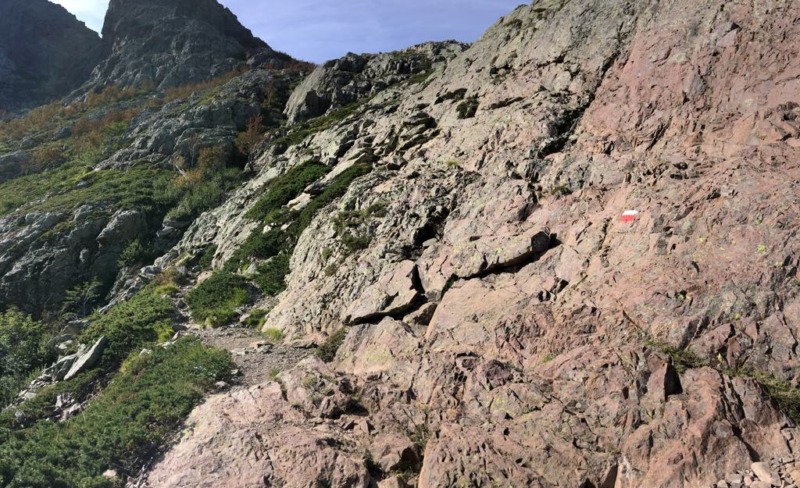
The small rock ledge just under the red-and-white GR 20 blaze marks the “hiking” route up rock walls and granite slabs to Ascu Stagnu. Photo by Christa Rolls
Gear recommendations for the GR20
My pack weighed a solid 12 kg without water, which was definitely more than I wanted given my total body weight. Your pack should only be about 20% of your body weight.
Keep in mind that I was carrying everything on my own. It helps if you’re sharing the load with someone else!
The full list of the gear I brought is as follows –
Backpacking Gear
- Deuter Lite 60+10 SL Hiking Pack (Recommend Hyperlite or similar lightweight pack, or smaller Deuter pack size (45-55 L))
- Eastern Mountain Sports 20 degree sleeping bag
- Sea to Summit backpacking pillow
- Thermarest foam pad
- Marmot Pulsar 2P tent (Recommend instead Ultra-lightweight 1 P tent)
- Emergency blanket for tent footprint
- Black Diamond hiking poles
- Petzel Headlamp
Kitchen
- Collapsible bowl
- Titanium spork or other eating utensil
- Collapsible cup/mug
- Jetboil stove (not necessary, as camps have cooking stoves to use with accommodation)
- Coleman gas canister
Food and Water
- Camelback 3 L bladder
- Katadyn 6L water filtration system (There is potable water at every refuge, so a Sawyer mini water filtration would be more appropriate)
- Breakfast, lunch/snacks, and dinner for 9 days on the trail (If you can, purchase more food at refuges to save weight)
Clothing and Footwear
- Vasque hiking boots
- Three pair hiking socks (SmartWool and Darn Tough)
- Reef flip flops (or other house shoes)
- Three pair Patagonia hiking underwear (originally purchased on discount at REI)
- Two hiking bras (originally purchased on discount at REI)
- One pair Columbia convertible pants
- Two moisture-wicking long-sleeved shirts
- Two moisture-wicking short-sleeved shirts
- Patagonia fleece (given to me by a mountain hut manager after someone left it for a month)
- Smartwool long john pants (originally purchased on discount at REI)
- REI puffy jacket
- North Face rain jacket
- Columbia Rain Pants
- Buff neck warmer
- North Face glove liners
- Prana ear warmer
Emergency and First Aid
- First Aid kit: alcohol wipes, antibacterial ointment, antidiarrheal, antihistamines, ibuprofen, antacid, epipen, gauze, medical tape, small round of duct tape, safety pin. In my first aid kit, I only used the ibuprofen twice and the alcohol wipe and antibacterial ointment once (not even from the trail, rather the steps of the first refuge… fail). I’d still recommend bringing a good suite of these things for your first aid kit. You never know when you’ll need it!
- Hiking whistle (check the chest buckle on your hiking pack – some have a whistle built in)
- Travel Insurance – I recommend this for every trip you take!
Health and Hygiene
- Toiletries: wet wipes, face wipes, toilet paper, hand sanitizer, nail clippers, contacts and glasses, sunscreen, mini toothbrush, toothpaste, concealer wand (for after trip), sunscreen lip balm, collapsible brush, shampoo soap bar
- Lightweight camping towel
- Sunglasses and baseball hat
Navigation
- Corsica guide to hiking the GR20 – comprehensive in detailing alternative routes, accommodation and food options along the trek, and history of the region
Tools and Repair items
- Multitool
- Repair kit for tent/mattress
Backpacking Extras
- Eiger Dreams by Jon Krakauer (I probably didn’t need a physical book, but it was nice after a long day)
- Eye mask and ear plugs
- Phone charger and battery pack (A Solar battery charger pack would have been better!)
- Dry bag (I really didn’t need this on the trail… but it came in handy for my kayaking trip later!)
- Stuff sacks for organizing gear (e.g., one sack for kitchen, one for food, one for clothes, etc.)
Personal Items
- Cellphone
- Credit cards and ID/passport
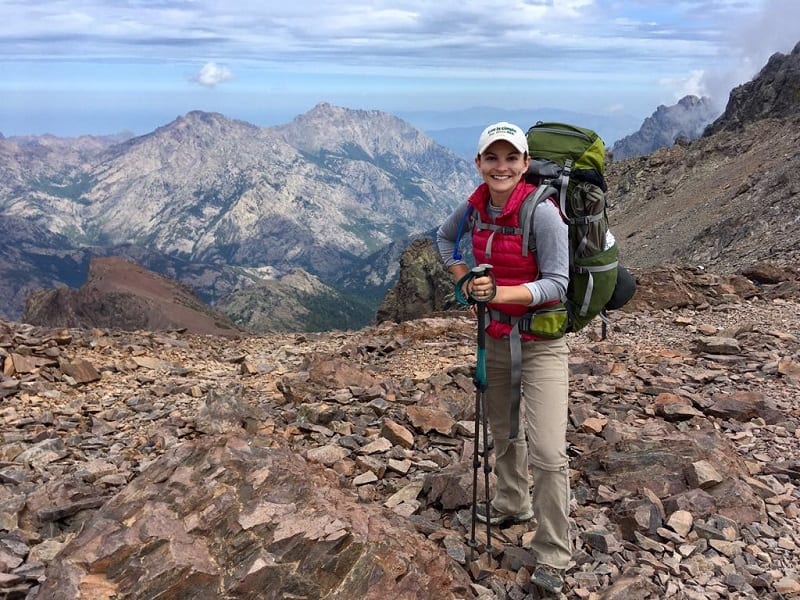
Standing at the Pointe de Eboulis, just below the Monte Cinto. Photo by Christa Rolls
Getting around Corsica after the GR20
There are buses and trains to get you around most of the island. If you want total freedom to visit places not regularly visited by bus or train, you’ll have to rent a scooter or car.
In the summertime and early fall, the buses and trains will run quite regularly. Outside of this season, some routes will stop altogether. Check the tourist information office websites for timetables and other information.
Otherwise, contact one of the main tourist information offices for information about routes and timetables.
Bastia Tourist Information Office
Place Saint-Nicolas, 20200 Bastia, France
+33 4 95 54 20 40
https://www.bastia-tourisme.com/
Calvi Tourist Information Office
Chemin de la Plage, Port de Plaisance, 20260 Calvi, France
+33 4 95 65 16 67
Ajaccio Tourist Information Office
3 Boulevard du Roi Jérôme, 20181 Ajaccio, France
+33 4 95 51 53 03
https://www.ajaccio-tourisme.com/
Depending on which city you end up flying out of, you’ll have a host of options for different sites to see and activities to do before you head out.
Don’t miss hanging on one of the island’s beautiful beaches for a day to rest your muscles after the strenuous hike. Beaches found around Cap Corse and the Porto Vecchio region are especially lovely.
If you aren’t one for lying about on the sand, there are opportunities for snorkeling, scuba diving, boating and sailing, kayaking and stand-up paddleboarding, and so much more at beaches in Corsica.
Most of all, have fun and be safe!
Are you planning to hike the GR20? Let us know if you have any questions!!
Happy hiking!
Christa and Nathan
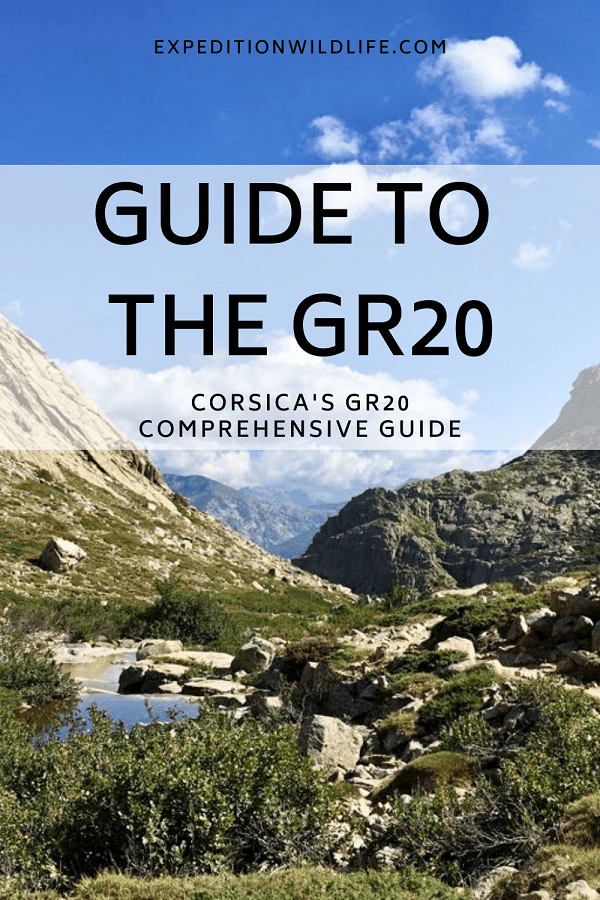

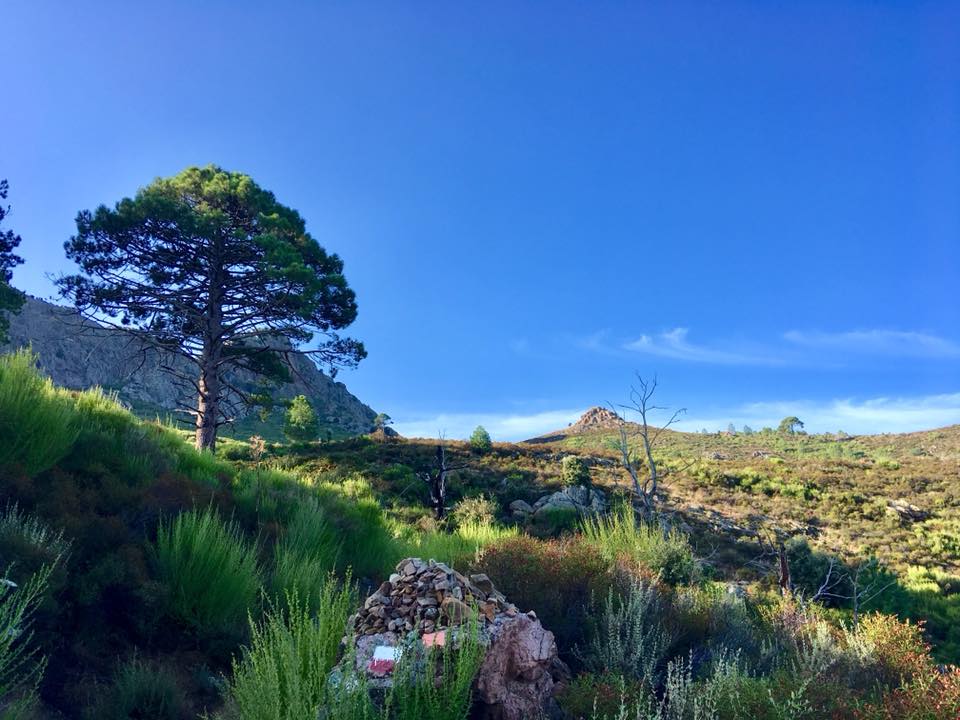
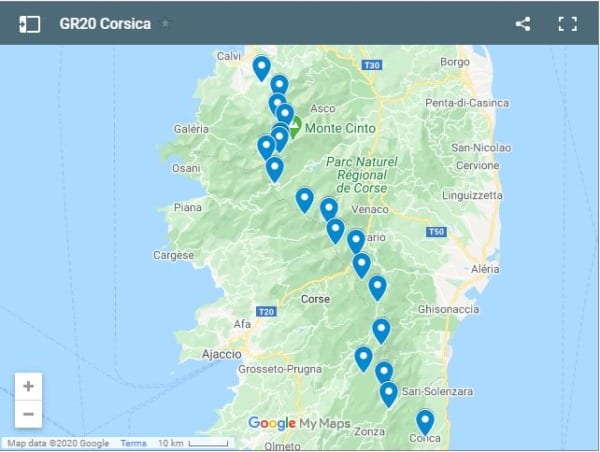
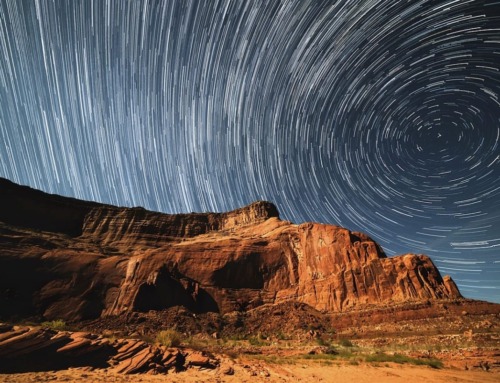
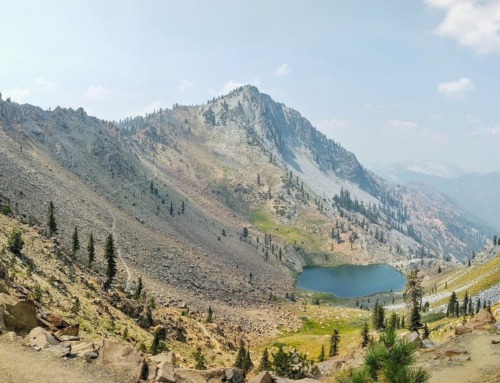

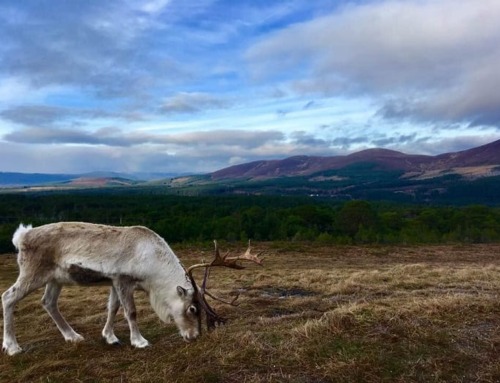
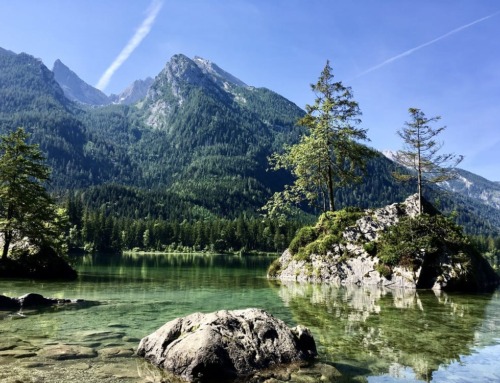
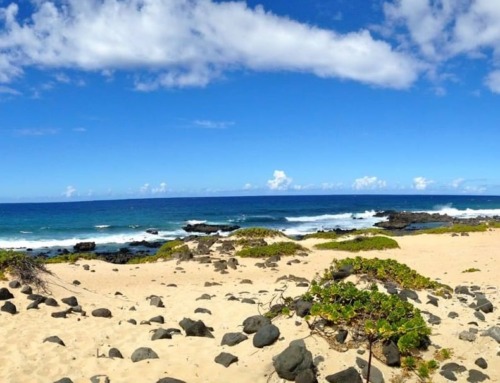
Leave A Comment